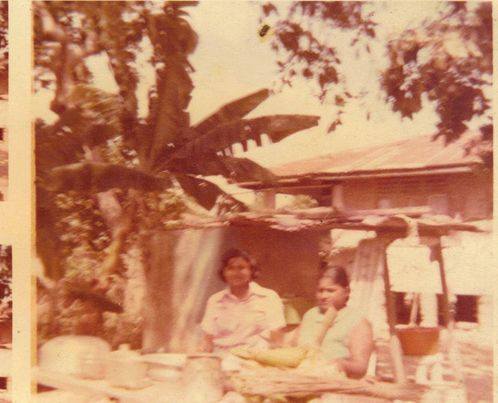|
My Navel String Buried Here!!!!!
By K Michael Kangalee The term 'meh navel-string buried here,” derives from past widespread cultural practice of burying the navel-string (umbilical cord) of a new-born usually under a banana (fig) tree. This ritual can be traced back to cultural practices of indigenous people and it symbolizes the planting of roots for their child in the land and in the community, thus reaffirming the child's cultural connections to the land of their birth. In many African cultures the umbilical cord is usually buried under a tree as a symbolic act of ongoing life. Other cultures throughout the world also share this ritual. I wonder if mothers in T&T still bury the navel-strings of their new-born babies in tree roots ? Do you know where your navel string is buried? One of our members Michael Kangalee who is 81 years shares his memory of the spot where his navel string is buried and the home he grew up in. The original fig tree where my navel string was buried in 1942 was cut down after bearing , however other suckers have grown-up in the same spot near to where I lived as a child . As such although today I am over 80 years , I know the exact spot where my navel string is buried since a fig patch still exists even today. When and how my Nana and Nani acquired the piece of land to build our humble home [the last piece of land where the Tacarigua river flows under the Eastern Main Road ], is unknown - -it could well have been the property of the maternal great grandparents Bhairo and Lachmin, who most likely emerged from their Indentureship Labours around 1895, or thereabouts. See those the two "fig" trees in the centre left in the attached photo my mother told me in 1955, that my "navel-string"{or is it umbilical cord?} was buried there in 1943 by my Nani. The "baby fig" tree there now in 2019 [ see colour photo ], has to be "an offspring of the original 1942 fig tree". I have eaten curry green fig talkarie picked from a tree in this patch in 2017. Seems to me that for the past 80 years and more, that spot on the family-land was always reserved for "fig trees"... and you will notice the land slowing gently to the Tacarigua river.... and you also see the Northern range in the background. Growing up as a little boy I could clearly visualize the tapia house we lived in that was built about 4 feet off the ground. [I cannot really remember whether this was a "leepayed" area or not?] –my family had a place to call home and the kids a place to play; rain or sun and that all that mattered. I remembered our humble dwelling having an open gallery; a Living Room/ Dining Room, and a bedroom[Basdeo Mamoo/Tanti Dolly], then down the steps to the outside kitchen[ communal cooking by the good mom and the two aunts];next to the gallery was a bedroom[the Nani] then another bedroom {Mom and Dad}. The next bedroom belonged to Puchee Mamoo and Tanti Laikoo, and Mamoo Shun and the baby brother stayed in the next bedroom.We children, about six , at that time, slept on blankets and bags, on the Living Room floor. Rasool, Gillan, and Baing and Motilal Mamoos had their own homes, by this time[1949], and sometime after 1950, only Nani and Basdeo Mamoo and his family remained at that house. There were about six concrete steps at the front and an equal number at the rear, which led to the outside kitchen, a galvanised structure, with a double- chulha, a home-made table and storage area/utensils for dry goods . An oil drum was acquired and converted to an oven { with heat at the bottom and top}; occasionally bread and sponge cake emerged and I could even in 2023, recall the pre-1950 smell of freshly-baking rum cake at Christmas - -either by Tanti Dolly or Tanti Laikoo. There was a chicken run at the rear, so eggs were available. I do not believe that pork and beef were ever served in our home. I do recall however, my Nani teaching me to "leepay - -{my Nani would insist that I keep my finger nails on my left hand very short}, and her fastidiousness about a clean yard, especially when she was arranging Hindu prayers {never a grain of grass was to be found on the yard}. The photo above was taken some time between 1963 and 1973 and shows a "fig tree" in some prominence; I am easily persuaded that that "fig tree" was a sucker which came from the original fig tree where my navel string was planted in 1942. (Source: Angelo Bissessarsingh's Virtual Museum of Trinidad and Tobago, August 9, 2023)
0 Comments
Leave a Reply. |
T&T news blogThe intent of this blog is to bring some news from home and other fun items. If you enjoy what you read, please leave us a comment.. Archives
June 2025
Categories
All
|


 RSS Feed
RSS Feed